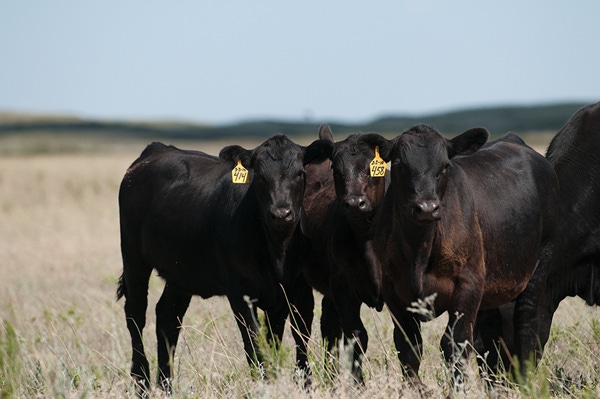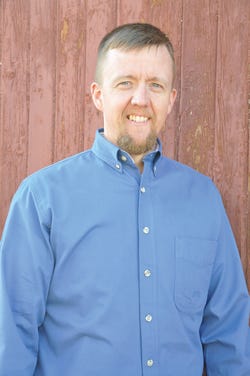Beef Veterinarians Must Partner With Clients To Ensure Operation Success
Helping clients find and exploit added value is all about understanding their unique operations and the beef industry, especially the basics.
June 3, 2014

Unless you understand the goals of unique client operations and the industry surrounding them, Jessica Laurin, DVM, believes a veterinarian’s ability to help clients add value is limited. She began the Animal Health Center of Marion County (AHCMC) in Marion, KS, in 1996.
Some of those goals are straightforward enough.
For instance, more of Dr. Laurin’s cow-calf clients are shifting toward fall calving in an effort to market calves into the high value spring grass market.
“There’s a big difference between a client wanting to sell a 5-weight or 6-weight calf in the fall or an 8-weight in the spring,” Dr. Laurin says. Management changes with the goal.
Other opportunities to serve clients are less obvious.
Dr. Laurin’s backgrounding clients, mainly family operations, have increased the size of their enterprises significantly in recent years from a couple hundred head to several thousand. When winter weather backed up the sales in eastern markets last fall, which are a source for many of those clients, she knew morbidity among new arrivals would be more challenging. By understanding the industry and the risks faced by her clients, though, she could help them manage the health of those delayed arrivals more effectively.
“I think you have to look at where the money is for clients,” says Kevin Dickey, DVM, at Owl Creek Veterinary Service in Thermopolis, WY. “In this business, I think we have to constantly ask why we’re doing something. With the price of calves, I think this is a year when we have to really question what we’re doing or not doing.”
Dr. Dickey is a relative newcomer, setting up his current shop three years ago.
For instance, he’s encouraging clients who normally forego implanting to consider the dollars left on the table.
“Conservatively, an implant can give them 20 pounds more. At $2.20/lb. that’s another $44 per head,” Dr. Dickey says. Unless they have a commensurate premium guaranteed for all-natural calves, he sees no reason to ignore the opportunity.
“With what we do, we have to make clients money or at least reduce the risk of them losing money,” says Arlyn Scherbenske, DVM, at Steele Veterinary Clinic (SVC) in Steele, ND.
An increasing number of Dr. Scherbenske’s cow-calf clients work with him to pregnancy check cows via ultrasound. Besides verifying pregnancy and having a chance to manage open cattle sooner, earlier detection enables clients to sort and manage cattle by calving group.
Dr. Scherbenske began practicing in Steele in 1980.

Arlyn Scherbenske, DVM, at Steele Veterinary Clinic (SVC) in Steele, ND
Speaking of conception rates, Dr. Scherbenske says, “The average commercial producer we serve is concentrating more on their bulls than they ever have.” That includes managing and ensuring the fertility of bulls in use as well as focusing harder on the genetics of the bulls they buy.
Dr. Dickey is encouraging his clients to pay more attention to their bulls, including fertility evaluation and testing for trichomoniasis ahead of turnout.
“You spend more money on bulls than any other cattle on the place. Then, too often, they’re neglected,” Dr. Dickey says. “You have to protect yourself by managing the risk as much as you can.”
All of these veterinarians are also seeing clients utilize more synchronization and artificial insemination. Each of the clinics mentioned here provides these services to clients, too.
“I’m continually amazed by how much our clients know about genetics and genetic evaluation and how willing they are to learn more about it,” Dr. Scherbenske says.
Each of these veterinarians is also seeing growing interest among clients concerning genomics and genomics tests.
Calf Value Makes More Things Possible
“We’re very fortunate that we have very progressive clients. That makes what we do more interesting and rewarding,” Dr. Scherbenske says. “For them, it’s not a matter of doing more or less based on the market. The value of the calf is important whether the market is up or down.”
So, even with 5-weight calves ringing the cash register at four figures, there is opportunity and desire by cattle producers to add and retrieve more value.
“If I can provide them something that provides insurance, it’s easy,” Dr. Laurin says. “You have to understand the industry and what their risks are.”
“You can buy a lot of preventative health care for the cost of losing one calf,” Dr. Dickey says. “What could we have done last spring so that we wouldn’t be sitting there this fall scratching our heads and trying to figure out what went wrong?”
Again, these veterinarians explain such opportunities need not be complicated.
Consider marketing.
Dr. Dickey preg-checked a top-drawer set of heifers for one client and found out they were for sale. He knew another client was looking to grow numbers. A phone call later and two clients were pleased with the added service he could provide.
Dr. Dickey also goes on sales calls with a seedstock client. Besides being able to offer insight into the health of that herd for his client’s prospective customers, it also allows him to learn more about the herds of current and prospective clients.

Kevin Dickey, DVM, at Owl Creek Veterinary Service in Thermopolis, WY
Dr. Dickey says this kind of added-value interaction earns him loyalty along the way. “I succeed when my clients succeed,” he says.
Similarly, if clients give their approval, Dr. Scherbenske and SVC provide buyers and potential buyers with information about client herds and calves.
One thing that has changed with increased calf value, Dr. Laurin says, is that some opportunities become more economically practical than in the past.
“My clients are more willing to spend money to protect their investment,” Dr. Laurin says. “That opens us up to the value of diagnostics more than was the case ten or 15 years ago.”
When calves were worth less, clients were more reluctant to take on the added expense of diagnostics like PCR respiratory panels that Dr. Laurin can use to quickly alter the health management of pens based on the presence of specific pathogens.
Likewise, Dr. Laurin explains Mannheimia and Pasteurella vaccinations have more value to buyers of her clients’ cattle than just a few years ago.
Dr. Laurin also continues to evaluate feedlot software, trying to find a cost effective solution for her backgrounding clients. The software cost and monthly fees associated with custom programs was prohibitive when calves were worth half as much. Now, the cost per head is getting more in reach.
“You have to take a value added approach with what you put into the cattle,” Dr. Laurin says. Deworming and implanting a client’s calves that will be marketed in two weeks, hence, makes little economic sense.
In all cases, Dr. Laurin says, “The only way added value is recognized is if it’s documented.”
Dr. Laurin’s clinic offered electronic identification and source verification services to clients several years ago but found it was too hard for them to retrieve added value based on the way they market their calves. Instead, a simple signed form she developed years ago continues to provide clients with verification of vaccinations and health management. It also provides auction markets supplement information that can be used on the auction block as client calves sell.
Some clients use vaccination programs developed by specific companies, while others use what AHCMC customizes for them.
Likewise, SVC helps clients verify calves through programs offered by various pharmaceutical companies. “I think those programs have really brought value to our clients,” Dr. Scherbenske says.
Dr. Dickey is seeing more of his clients market their calves direct. For clients only casually familiar with the process, that gives Dr. Dickey a chance to visit with them about weighing conditions and shrink management.
When it comes to identifying how to help clients add value, Dr. Scherbenske explains, “Some come seeking information. Some of them are ahead of us. Others are harder to reach. But, maybe you’re preg-checking for them. You can start asking questions and making suggestions.”
“As a vet, you have to understand so many areas,” Dr. Laurin says, giving a nod to one advantage of multipractitioner clinics like hers where staff members have various areas of expertise. “Finding quality continuing education that focuses on current topics is useful, too, like that offered at the Academy of Veterinary Consultants (AVC) in recent years.” She happens to be president-elect of that organization.
“As a vet, as you grow and mature and focus on areas of interest, that helps, too,” she says. In her case, nutrition has become a specialty.
Relationships Matter
Adding value to client operations for these veterinarians boils down to the personal relationship they have with their clients, as well as the desire to have that kind of relationship with new clients. Hobbled to a different pony, this means these veterinarians are intricately connected to their clients inside and outside of their practices.
Consider SVC. One of its clients is the North Dakota State University (NDSU) Experiment Station at Streeter. That gives Dr. Scherbenske and his fellow veterinarians insight to current research projects. It also offers opportunities to participate in university studies along with the ones they do with various companies.
“We’re always open to those kinds of studies and our clients are open to them, too,” Dr. Scherbenske says. Aside from finding out some cutting edge information in general terms, participation means knowing local implications.
Moreover, NDSU hosts a field day in Streeter every year. For clients unable to attend, the SVC crew serves as adjunct extension personnel. They’re also involved in extension meetings around the state. Additionally, two sale barns are clients. If there’s something going on in the region their clients need to know about, the SVC crew knows it.
In other words, the SVC crew didn’t find out about the federal funds available to help clients rid their herds of Johne’s disease by waiting to read about it. They didn’t uncover, third-verse, the need, ways and means of helping cow-calf and backgrounding clients identify cattle persistently infected with bovine viral diarrheal virus. Their connections help them stay on the cutting edge of what’s out there and what’s available.
Periodically, Dr. Dickey produces a newsletter for his clients highlighting relevant recent research and timely, practical information.
“I think it pays dividends. You have a more informed client, and you’re giving them information that generates questions,” Dr. Dickey says. Response to it has been positive. He’d considering farming out the production so he can send it more frequently.
Dr. Dickey is also kicking around the notion of surveying clients about their needs. Dr. Laurin and her crew actively seek input about customer satisfaction through a survey clients can access via the clinic’s website.
A couple of years ago, Dr. Laurin began developing educational modules for her iPad that she could share with clients as she made regular rounds. Think back to the increased health challenge of the clogged marketing system mentioned earlier. That got her to thinking about the need to revisit with clients about sourcing cattle. This included a discussion about market classifications and topics as rudimentary as determining what she and her client each meant when referring to a Medium and Large #1 or an Okie #2.
“Using the modules, interaction with clients on these topics becomes so much easier,” she says.
“My relationship with my clients helps me assess and reassess what’s changing and what their needs are,” Dr. Laurin says.
“You have to be concerned about the clients, their families and their livelihoods,” Dr. Scherbenske says. “You want to be their partner.”
“I want to earn the level of trust where clients will ask questions,” Dr. Dickey says. “There are plenty of veterinarians in this area who provide traditional services like brucellosis vaccinations, preg-checking and processing calves when needed. What I want to bring to the area is becoming a partner in the success of my clients’ businesses.”
“As veterinarians, we can’t be good at everything, but one thing we can be excellent at is finding answers to client questions, or leading them to who has the answer,” Dr. Dickey says. “I’ve gained trust and clients because I answered the phone and made it clear their questions and concerns were important to me. I may not know the answer, but I’ll go down swinging with you to try to find it.”
Other stories you might enjoy:
Fixing Fences For Summer Turnout? 7 Mistakes To Avoid
Discuss This --> Are Vegetable Proteins Equal To The Protein In Beef?
Sign This Petition NOW To Remove HSUS From Non-Profit List
5 Essential Steps For Fly Control On Cattle
About the Author(s)
You May Also Like




.png?width=300&auto=webp&quality=80&disable=upscale)
